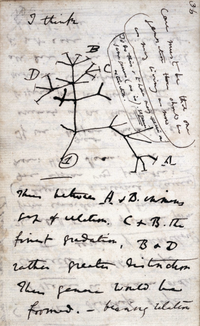
Photo from wikipedia
Body traits are important economic factors in the pig industry. Genome-wide association studies (GWASs) have been widely applied using high-density genotype data to detect QTL in pigs. The aim of… Click to show full abstract
Body traits are important economic factors in the pig industry. Genome-wide association studies (GWASs) have been widely applied using high-density genotype data to detect QTL in pigs. The aim of the present study was to detect the genetic variants significantly associated with body traits in crossbred pigs using the Illumina Porcine SNP50 BeadChip and imputed whole-genome sequence data. A set of seven body traits - body length, body height, chest circumference, cannon bone circumference, leg buttock circumference, back fat thickness and loin muscle depth - were measured. Moderate to high heritabilities were obtained for most traits (from 0.14 to 0.46), and significant genetic and phenotypic correlations among them were observed. GWAS identified 714 significantly associated SNPs located at 39 regions on all autosomes for body traits, and a total of seven functionally related candidate genes: PIK3CD, HOXA, PCGF2, CHST11, COL2A1, BMI1 and OSR2. Functional enrichment analysis revealed that candidate genes were enriched in the estrogen signaling pathway, embryonic skeletal system morphogenesis and embryonic skeletal system development. These results aim to uncover the genetic mechanisms underlying body development and marker-assisted selection programs focusing on body traits in pigs.
Journal Title: Animal genetics
Year Published: 2022
Link to full text (if available)
Share on Social Media: Sign Up to like & get
recommendations!